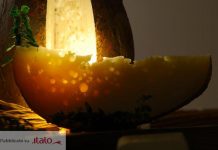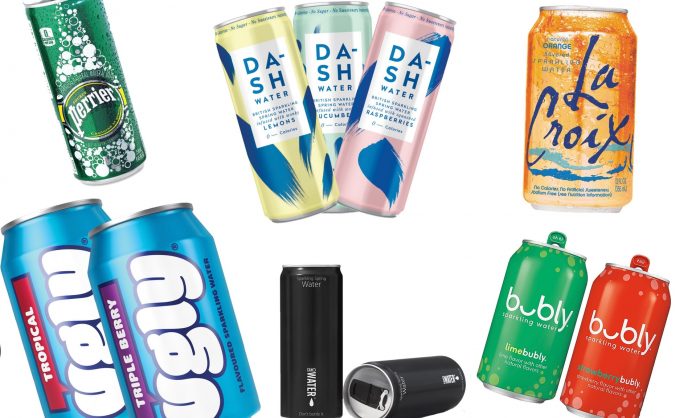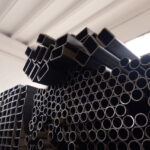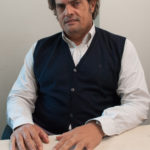t’s getting to the point where buying a plastic bottle of still water marks you out as some kind of environmental vandal. But sparkling water? Somehow that’s different. That says you have good taste and care about “clean” drinking. Sparkling water in a can? You’re obviously health-conscious, fashionable and environmentally aware.
The sparkling water wars are upon us, or are at least kicking off in the US and could be heading our way. Last month, PepsiCo launched Bubly, a range of flavoured sparkling waters, packaged in cute, brightly coloured cans. It is going up against the market leader, a brand called La Croix, which has become a hit despite eschewing traditional advertising.
Both are yet to reach the UK, and although canned sparkling water isn’t a new innovation – Perrier has been doing it for many years – there are signs we will be seeing more of it. Ugly launched in the UK in 2016 with a range of calorie-free flavoured sparkling water in cans, and is about to launch in the US. Dash Water is another brand, this one with a waste-reducing ethos. It is flavoured with “wonky” produce such as cucumbers and lemons that might otherwise go to waste. Sold in cans and “crafted” (their words) in the UK, it launched last year and is stocked mainly in London, in stores such as Selfridges and Whole Foods. It costs about £1.50 a can.
“It’s a lifestyle brand,” says co-founder Jack Scott. “We wanted to create a drink that was a credible alternative to the normal soft drinks that are [full of] either sugar or artificial sweeteners. It’s something that is tasty, but has none of the bad stuff.” Both founders are in their 20s, and have an eye on the power of social media. “We’ve tried to create something that’s desirable, that people want to have and also share on Instagram.”
Another brand, CanO Water, launched in 2016, as a response to growing concerns about plastic pollution. “Still water is always going to sell more, but we have noticed people have been ordering more sparkling water than they did last year,” says co-founder Ariel Booker. “For us, it seems to be an older demographic, over-35 and leaning towards women.” Like much of the growth, it appears to be driven by people moving away from sugary fizzy drinks. “They may be a bit bored with plain water and looking for something else. [Fizzy water] is an alternative to something that has lots of sugar in it, but it still feels like you’re drinking something other than water.”
The retail analysts Mintel estimated that sales in the UK of sparkling water were £204m in 2016, up 11% on the year before, with growth in both flavoured and unflavoured fizzy water. “Water has received a lot of benefit from the focus on sugar in soft drinks,” says analyst Alice Baker. “Forty-eight per cent of bottled-water drinkers reported that concerns over sugar had prompted them to switch.” Even some of the flavoured brands, which might have added sugar, benefit from the healthy association with water.
Baker says she sees potential for sparkling water. It may weather the backlash against plastic pollution better than still water because “it’s offering something a bit different. It’s not one that can be easily replicated at home. But I still think it’s going to [see] some effect from the concerns about plastic.” She is also seeing it being promoted in new ways. She was struck by one brand’s advertising over Christmas that was pushing its sparkling water as a mixer for cocktails.
Sparkling water appears to be a younger person’s drink. Overall, according to Mintel, a third of British people have drunk flavoured sparkling water in the past three months, but this rises to 50% of those aged 16 to 24 and 49% of those aged 25 to 34. It’s a similar story for unflavoured sparkling water.
In the US, LaCroix (pronounced La-Croy) is the millennials’ brand of choice, with its 80s-style packaging – featuring unusual flavours such as peach-pear and blackberry with cucumber – appearing all over Instagram. Wired called it the “the darling of the internet, where health-conscious food bloggers and Instagrammers have formed an army of free advertising”. It has inspired parodies: illustrator Kate Bingaman-Burt created a series of prints of fake LaCroix flavours. She had posted her first drawing to Instagram and “people were really drawn to it and started requesting other flavours”, she says. “I made a series of rejected flavours that included male tears, Taco Bell, pennies and other nonsensical flavours that make about as much sense as some of the real ones.”
Sparkling-water fans can go beyond talking mere flavours. Unflavoured mineral waters have differing tastes according to their mineral makeup, claims water sommelier Martin Riese. “The higher the mineral content, the stronger the flavour,” he says. Riese works at a US restaurant group, where his menu includes more than 26 waters (“I can pair every single water to every single dish”) and he has a podcast on the subject. He knows, he says, “which water fits perfectly to your pizza, which fits with Mexican food. Some waters have a totally different impact on the food. You don’t have to be an expert [to taste the difference]. My palate is now trained to detect the nuances of water, but when I give guests the water menu and we taste, for instance, a Hildon from Great Britain versus [Spanish brand] Vichy Catalan, a very heavy mineral water, everybody can taste the difference.”
Hildon’s version, he says, “has very tiny bubbles, it’s gently sparkling. It’s almost like champagne bubbles. The mineral content is not too high [329mg a litre]. This water is very smooth on your palate with a hint of acidic notes towards the end because the carbonation makes it slightly acidic.” Compare that with Vichy Catalan, he says, which has a TDS (total dissolved solids) of almost 3,000mg a litre. “It has very bold bubbles, it’s very strong, heavy, aggressive on your palate.”
Europeans, he points out, have always loved sparkling water, but the drink is taking off in the US where “people have switched from sodas to sparkling water for health benefits. For people who were always on soda, it’s easier to drink sparkling water because it has the same mouthfeel. To convince them to drink still water is tough because it’s so different.”
So, is sparkling water harmless? Not exactly. “It’s great in terms of trying to get your sugar intake down, but people also need to think about their dental health,” says Helen Bond, spokesperson for the British Dietetic Association. “[Sparkling water] is quite acidic. It’s not as acidic as fizzy soft drinks, but it is still acidic because of the amount of CO2, which creates carbonic acid. It gives that refreshing taste, but it’s not good news for your teeth, especially if you are sipping at it throughout the day. It [causes] dental erosion rather than the dental decay you get from carbohydrates and sugar.” She says it is better to drink it at mealtimes. “Plain tap water is always best – it doesn’t have sugars and it is less damaging in terms of dental erosion.” It just doesn’t look as pretty on Instagram.
Source https://www.theguardian.com/lifeandstyle/2018/mar/21/sparkling-water-craft-fizzy-bubly-dash-ugly-la-croix























































